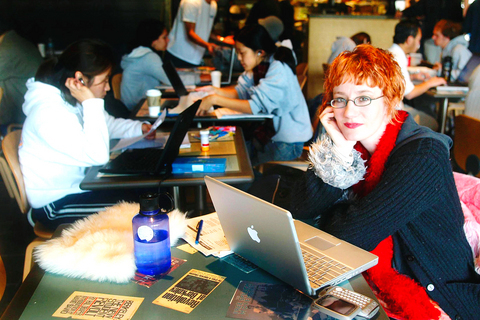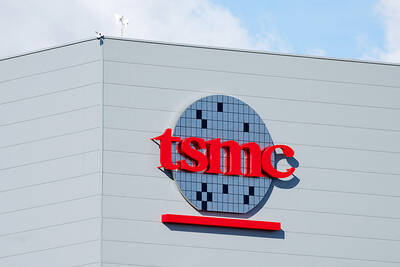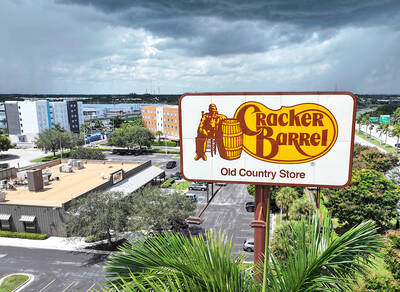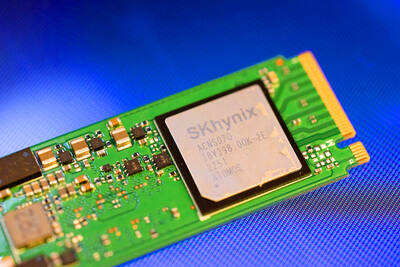Jonathan Abrams was in a spot. He could take the safe bet and accept the US$30 million that Google was offering him for Friendster, the social networking Web start-up he began only a year earlier, in 2002.
Saying yes to Google would provide a quick and stunning payout for relatively little work and instantly place the Friendster Web site in front of hundreds of millions of users across the globe.
But at the same time, some of the biggest names in Silicon Valley were lobbying Abrams, a computer programmer, to reject Google's offer. America Online had offered the two founders of Yahoo a few million dollars each in the mid-1990s for their Web site -- and both became billionaires because they said no.

PHOTO: NY TIMES NEWS SERVICE
Sell us a stake in your company for US$13 million, the advisers told Abrams, and we will help build Friendster into an online powerhouse worth hundreds of millions, if not billions, of dollars.
Abrams spurned Google's advances and charted his own course. In retrospect, he should have taken the US$30 million. If Google had paid him in stock, Abrams would easily be worth US$1 billion today, one person close to Google said.
Friendster essentially created the social networking sector three years ago by offering users a site where they could browse profiles posted by friends and the friends of friends in search of dates and playmates. But so badly did Friendster fumble its early lead that, as of last month, it ranked 14th among social networking sites tracked by comScore Media Metrix.
Why and how Friendster missed the mark is a salutary Silicon Valley tale so instructive that Mikolaj Jan Piskorski, an assistant professor at the Harvard Business School, uses the company's inglorious fall as a case study in his strategy classes.
`an ego story'
There is no single reason that explains Friendster's failures, Piskorski said which is what makes it academic fodder. "It's a power story," he said. "It's a status story. It's an ego story." But largely, he said, Friendster is a "very Silicon Valley story that tells us a lot about how the Valley operates."
The second half of the 1990s had seen any number of failed social networking sites, including forgotten enterprises like Six Degrees and SocialNet.
"We all basically hit the market several years before the market was ready for social networking," said Reid Hoffman, the founding chief executive of SocialNet and an early investor in Friendster.
Abrams, though, had perfect timing. Friendster made its Web debut in March 2003, and though it was then a speck of a start-up that spent no money on marketing, it signed up 3 million registered users by the fall.
The list of venture capitalists enticing him to say no to Google and to go it alone included John Doerr, the legendary venture capitalist at Kleiner Perkins whose list of greatest hits includes Google, Netscape and Amazon.com, and Bob Kagle, the Benchmark Capital partner who first spotted eBay.
Doerr and Kagle took seats on Friendster's board, as did another investor, Timothy Koogle, who had been the chief executive of Yahoo through the second half of the 1990s. Other investors included Peter Thiel, a co-founder of PayPal, which eBay bought for US$1.5 billion in 2002, and K. Ram Shriram, one of the first investors in Google and perhaps the most-sought-after angel investor in Silicon Valley.
Abrams now casts that board, composed primarily of men in their 50s who were far older than the site's target demographic, and the recruits they drafted as the main cause of Friendster's great stumble.
Through a colleague from a previous tech start-up, Melissa Gilbert, Abrams declined to comment for this article, saying he was too busy working on a new start-up to talk about the past. Gilbert, though, who described herself as the first investor in Friendster, echoed the comments of others close to Abrams.
He believed that he had developed a sound business plan for building Friendster into an Internet powerhouse and that the plan foundered when his well-known investors shoved him aside and proceeded to mess everything up, Gilbert wrote in an e-mail message.
Russel Siegelman, one of Doerr's partners at Kleiner Perkins, said Abrams has a point as the original board had little feel for the product.
replaced
But he also described Abrams as a founder in way over his head, which is why, in April 2004, only a few months after investing in the company, the board replaced him as chief executive.
The board lost sight of the task at hand, said Kent Lindstrom, an early investor in Friendster and one of its first employees. As Friendster became more popular, its overwhelmed Web site became slower. Things would become so bad that a Friendster Web page took as long as 40 seconds to download.
Yet, from where Lindstrom sat, technical difficulties proved too pedestrian for a board of this pedigree.
In retrospect, Lindstrom said, the company needed to devote all of its resources to fixing its technological problems. But such are the appetites of companies fixated on growing into multibillion-dollar behemoths. They seek to run even before they can walk.
The board replaced Abrams with one of its own, Koogle, the former chief executive of Yahoo. But Koogle served for only three months.
The board next chose a television industry executive, Scott Sassa, to replace Koogle. That selection might have made sense if the company had been in position to start cutting big advertising deals. But it was not, given that its Web site was not up to speed.
Sassa left after less than a year, which was nearly twice the tenure of his successor, Taek Kwon, who left at the end of last year, six months after he started.
Last fall, Friendster hired an investment banker to shop the company around. In part, the board was inspired by the US$580 million that Rupert Murdoch's News Corp agreed in July last year to pay for Intermix Media and its primary asset, MySpace. In the end, though, the investors failed to find a suitor willing to pay even US$20 million for the company.
Friendster was nearly out of cash by the end of last year. It had halved its payroll, to 25 employees, and advertising was hard to come by on a site that still did not work right. The venture capitalists considered shutting down the company.
obligation
But a sense of obligation and economics prompted Kleiner Perkins, Benchmark and some of the private investors to sink an additional US$3 million into the company at the start of this year.
The venture capitalists reconstructed the board and put Lindstrom, who had been with the company since mid-2003, in charge. The company hired yet another chief of engineering, who laid down the law: At least 80 percent of his people would work on performance and stability issues until the Web site worked as well as it should.
"In the past, we had often chosen the more exotic solution over the more simple solution," Lindstrom said. Trailblazing a new field like social networking was enough of a challenge. "But we were also trying to innovate on the tech side as well," he said. The company finally licked its performance problems this last summer, Lindstrom said.
The team now running Friendster hopes it can position the company as a site for an older demographic group -- people 25 to 40 -- who do not have the time or inclination to spend hours each day on MySpace.
"Friendster missed the chance to become a multibillion-dollar company," said Thiel, the PayPal co-founder who has continued to invest in Friendster. "But I still see a lot of opportunity here."

Taiwan Semiconductor Manufacturing Co (TSMC, 台積電) secured a record 70.2 percent share of the global foundry business in the second quarter, up from 67.6 percent the previous quarter, and continued widening its lead over second-placed Samsung Electronics Co, TrendForce Corp (集邦科技) said on Monday. TSMC posted US$30.24 billion in sales in the April-to-June period, up 18.5 percent from the previous quarter, driven by major smartphone customers entering their ramp-up cycle and robust demand for artificial intelligence chips, laptops and PCs, which boosted wafer shipments and average selling prices, TrendForce said in a report. Samsung’s sales also grew in the second quarter, up

On Tuesday, US President Donald Trump weighed in on a pressing national issue: The rebranding of a restaurant chain. Last week, Cracker Barrel, a Tennessee company whose nationwide locations lean heavily on a cozy, old-timey aesthetic — “rocking chairs on the porch, a warm fire in the hearth, peg games on the table” — announced it was updating its logo. Uncle Herschel, the man who once appeared next to the letters with a barrel, was gone. It sparked ire on the right, with Donald Trump Jr leading a charge against the rebranding: “WTF is wrong with Cracker Barrel?!” Later, Trump Sr weighed

HEADWINDS: Upfront investment is unavoidable in the merger, but cost savings would materialize over time, TS Financial Holding Co president Welch Lin said TS Financial Holding Co (台新新光金控) said it would take about two years before the benefits of its merger with Shin Kong Financial Holding Co (新光金控) become evident, as the group prioritizes the consolidation of its major subsidiaries. “The group’s priority is to complete the consolidation of different subsidiaries,” Welch Lin (林維俊), president of the nation’s fourth-largest financial conglomerate by assets, told reporters during its first earnings briefing since the merger took effect on July 24. The asset management units are scheduled to merge in November, followed by life insurance in January next year and securities operations in April, Lin said. Banking integration,

LOOPHOLES: The move is to end a break that was aiding foreign producers without any similar benefit for US manufacturers, the US Department of Commerce said US President Donald Trump’s administration would make it harder for Samsung Electronics Co and SK Hynix Inc to ship critical equipment to their chipmaking operations in China, dealing a potential blow to the companies’ production in the world’s largest semiconductor market. The US Department of Commerce in a notice published on Friday said that it was revoking waivers for Samsung and SK Hynix to use US technologies in their Chinese operations. The companies had been operating in China under regulations that allow them to import chipmaking equipment without applying for a new license each time. The move would revise what is known